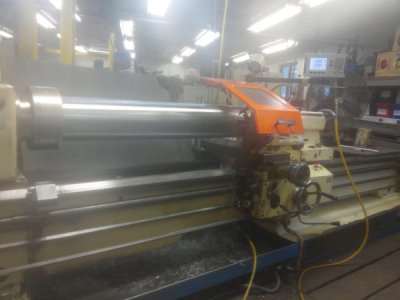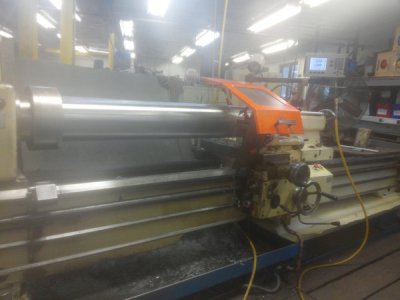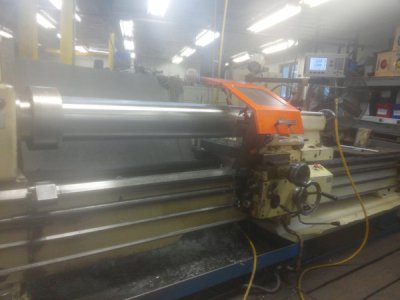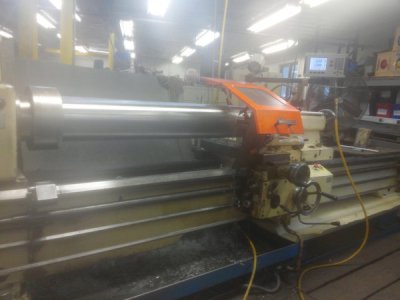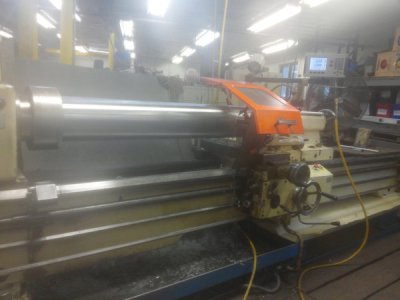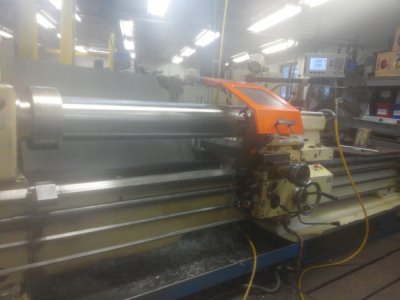You will realize over time that often there is only one order of operations that will actually work on a given part, this may require multiple set ups, fixtures and rechucking the part several times which is time consuming at best and is always tedious. This may have to be done however regardless of you being a hobbyist and having all of the time that you may need or working a job where X number of parts must be produced in X period of time.
Relax and think about it, plan accordingly.
Today I turned 2 lathe parts, 9.100 diameter X 55 3/4" long from 1" wall steel tubing, I rough turned the OD chucked internally with a plug in the tail stock end.
After both were roughed I put a steady on and faced, bored and put a 10° taper on one end (the bore is for a fixture used by the plater as the last op is hard chrome).
Turned them 180° and faced to length and bored, this end has a cap welded in it, total time 7+ hours including loading 300+ pound parts. They then have the end cap welded in after which they go back in the lathe and the end cap is finish bored and faced so that they may be held in a spacer on a mill, holes and slots are milled through the wall. Another part is then welded through the cross hole, the part then goes back into the lathe for the 3rd time and turned to the soon to be chromed diameter of 8.992 +0-.002 where .003 of chrome per side will make the finish diameter 8.998 +.000 -.002, overall 25 or more hours per part.
Don't worry you have all the time needed and you will eventually become accustomed to doing things in the best order possible. Experience is important yet not essential in all applications, if you do not try you will never learn, my advice is to have at it.
